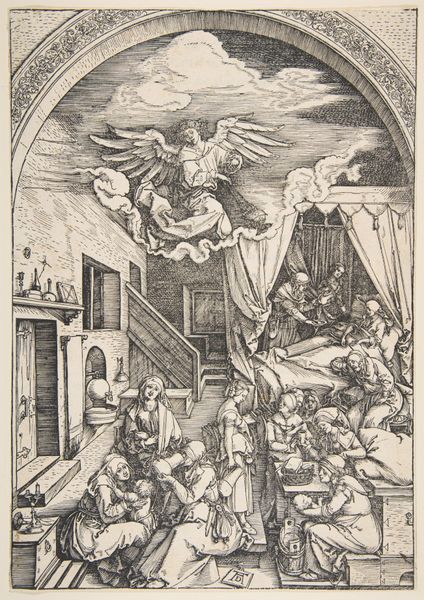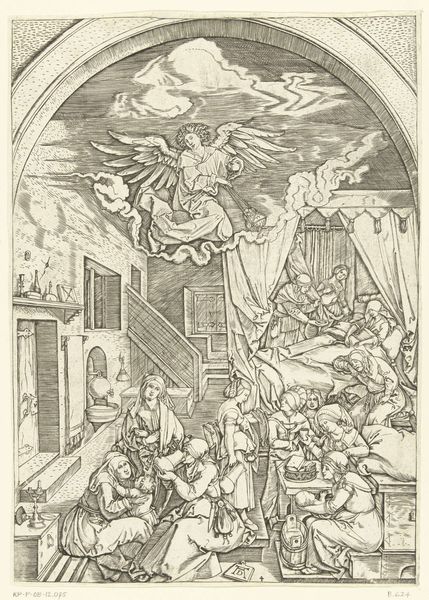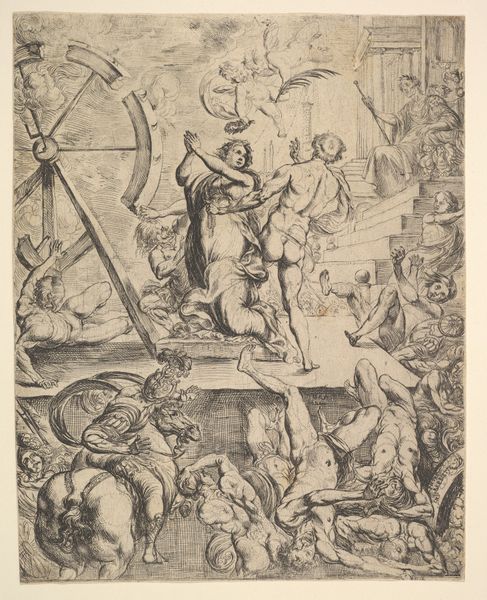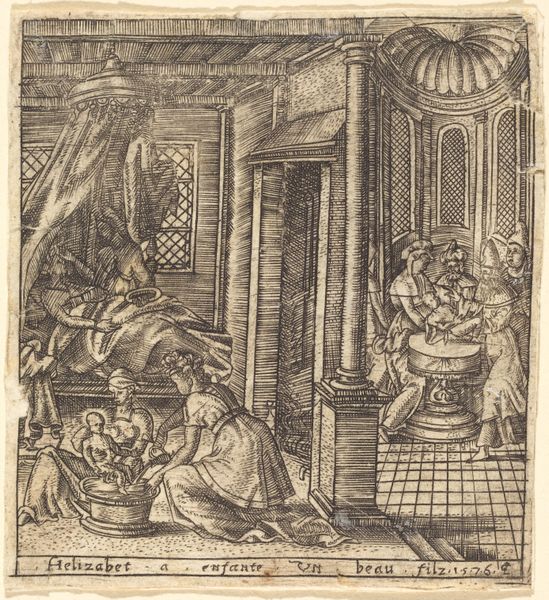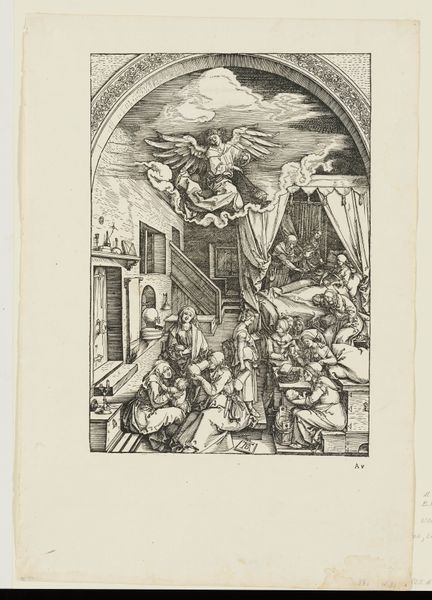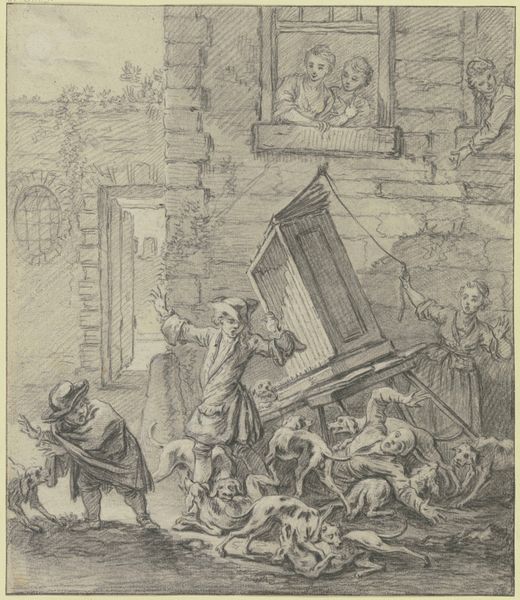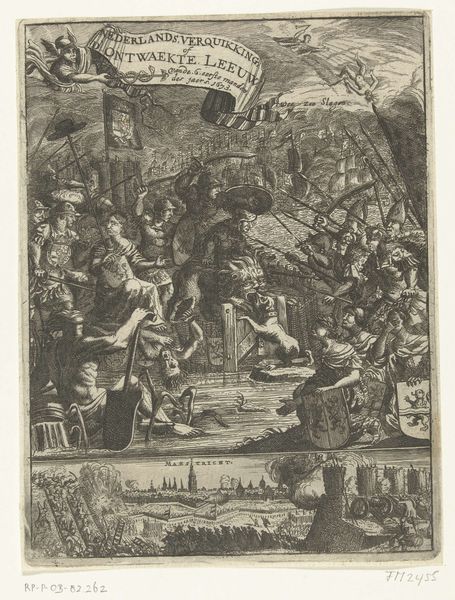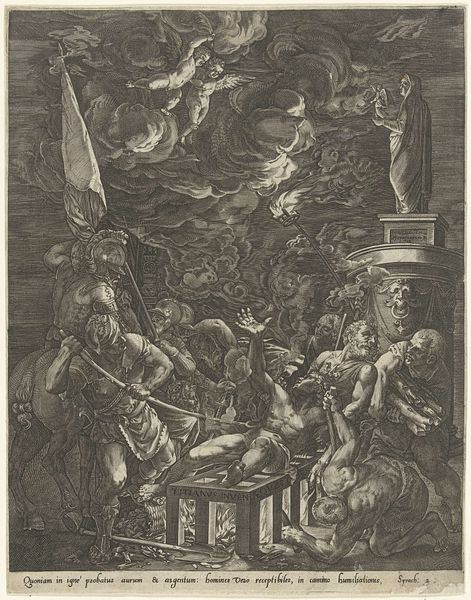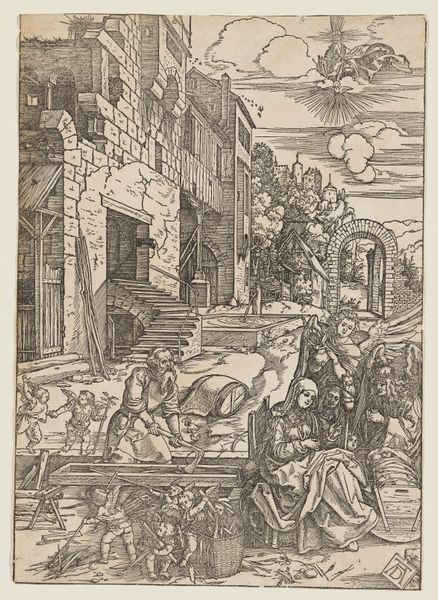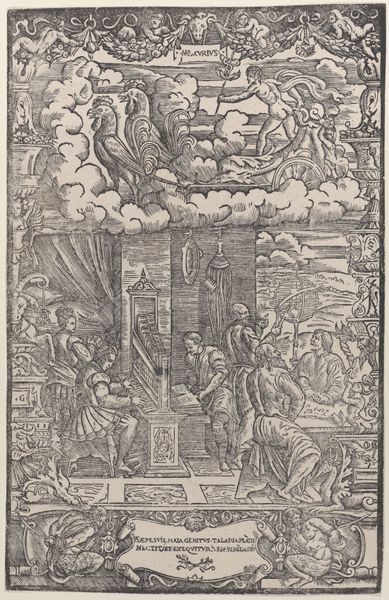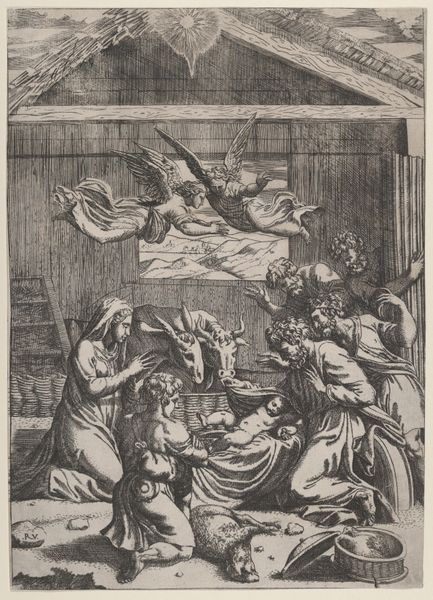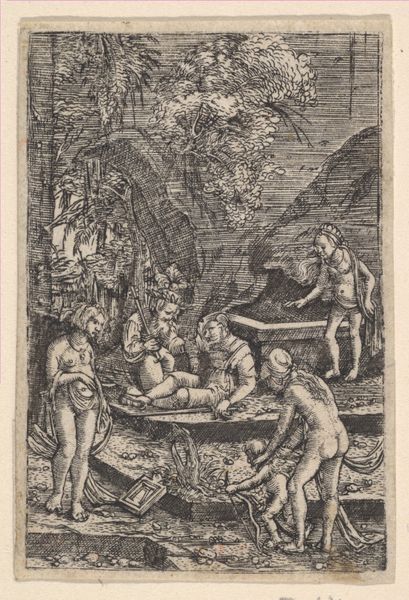
The Birth of the Virgin, from The Life of the Virgin (copy) 1485 - 1917
0:00
0:00
drawing, print, ink, woodcut
#
pen and ink
#
drawing
#
ink drawing
#
narrative-art
#
ink painting
# print
#
pen sketch
#
pencil sketch
#
ink
#
woodcut
#
history-painting
#
northern-renaissance
Dimensions: Sheet: 11 7/8 × 8 1/4 in. (30.2 × 20.9 cm)
Copyright: Public Domain
Curator: Immediately, I'm drawn into this whirlwind of activity, a sort of beautifully rendered chaos in sepia tones. There's a quiet hum, a sacred hustle about it all. Editor: And rightly so! What we're looking at is "The Birth of the Virgin," a work attributed to Albrecht Dürer. Interestingly, though dated to around 1485 to 1917, the date span highlights the complexities of historical attribution and creation. It's currently housed at the Metropolitan Museum of Art. It's a woodcut print. Curator: A print! Knowing it's a woodcut gives such reverence to all the teeny tiny movements, the intricate details that are carved out—it gives a depth you only discover under the print. Is this some sort of record? I mean it tells a narrative and feels very deliberate with that archway directing our eyes to that floating angel. Editor: Well, it is part of a series, "The Life of the Virgin", telling Mary's story. Prints, particularly woodcuts like this one, played a vital role in disseminating religious imagery and narratives in the Northern Renaissance. They were more accessible to a wider audience than paintings. You are correct about that arch directing our eye to the action happening in different zones. Curator: Accessible art. That's kind of genius—thinking about how images shape the mind and imagination, the sort of democratization of storytelling. Did Dürer consider his audience while making this? Editor: Dürer was keenly aware of his audience, and he tailored his work accordingly. There was a huge audience for biblical imagery as access to literacy and visual knowledge expanded in the 15th and 16th centuries. He wanted to convey theological and social themes effectively for people. His clever printing distribution model led to a greater chance of fame and more influence in society as more prints came off the press. It’s hard to deny he had that on his mind. Curator: Seeing how the sacred and strategic overlap, this intersection gives Dürer's art a real substance, I want to see this in person and look closer, tracing all the layers in the artwork—thank you for sharing! Editor: Yes, and as you explore, ponder this too: what kind of social impact these art pieces created through time as images and their dissemination were handled and regulated! Something worth contemplating.
Comments
No comments
Be the first to comment and join the conversation on the ultimate creative platform.
